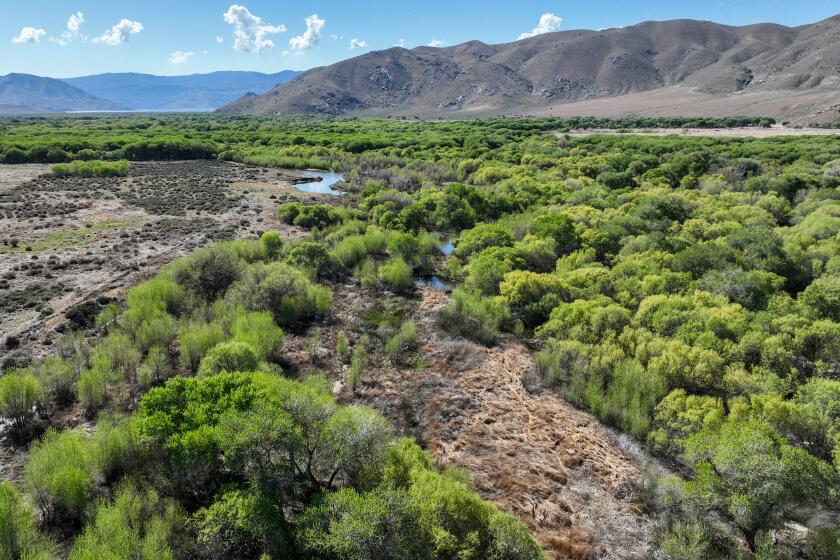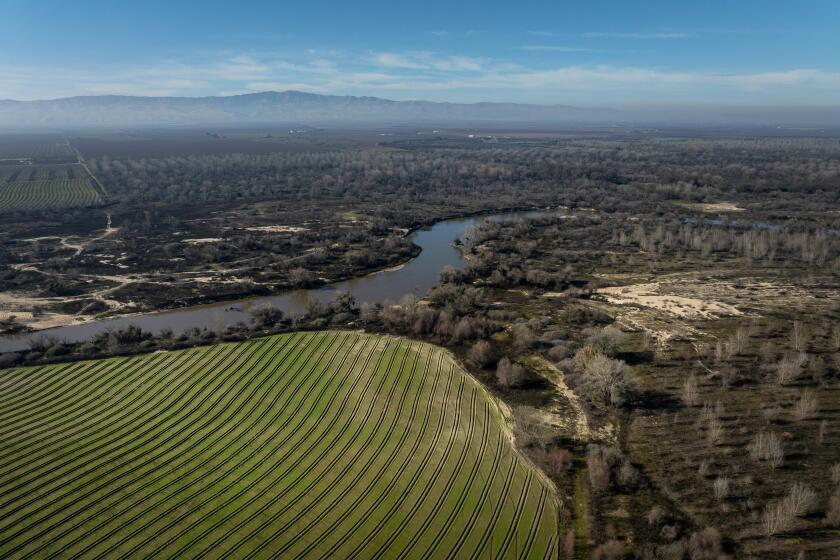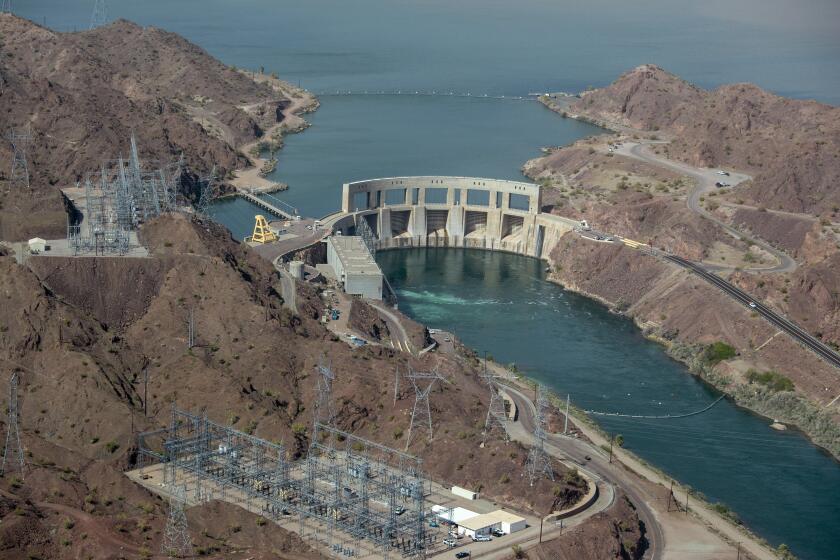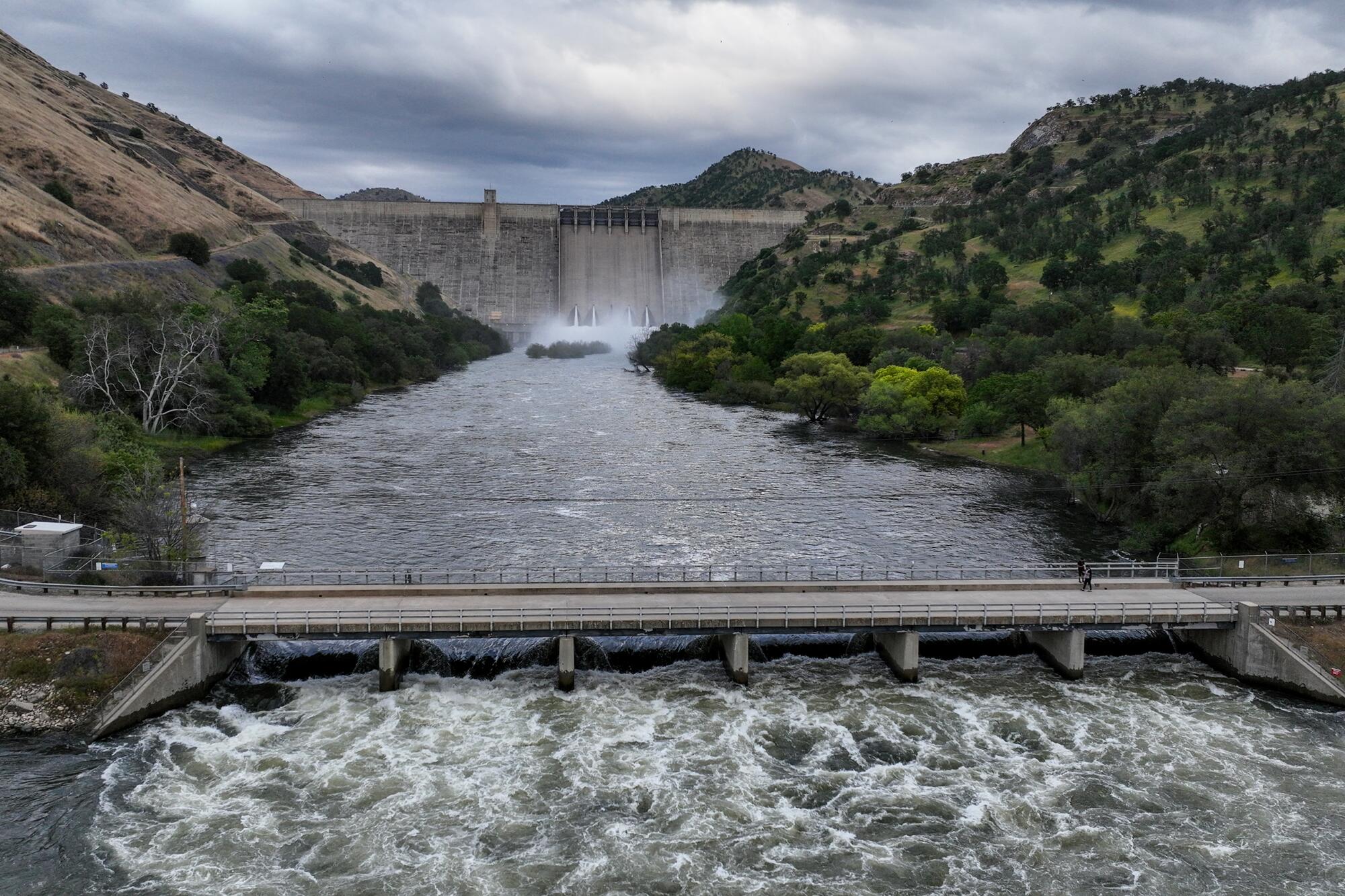
In the face of climate change and worsening cycles of drought, California water managers have been increasingly focused on the precise tracking of water resources. Snowpack in the Sierra Nevada is measured with sensors and aerial images, reservoir levels are electronically logged, and the movement of water through aqueducts is apportioned based on rights and contracts.
Yet there is another key water metric that California has never adequately measured: the flow of rivers and streams.
New research by UC Berkeley scientists has found that only 8% of the state’s rivers and streams are equipped with gauges — devices that measure the level and rate of movement of water.
The study, published in the journal Nature Sustainability, details the large portions of the state’s waterways that aren’t monitored and examines the consequences for humans and wildlife as climate change intensifies the water cycle, alters watersheds and threatens vulnerable fish and other species. The researchers also outlined methods for California to select new monitoring locations to expand its network of stream gauges.
“We can’t manage what we don’t measure,” said Lucy Andrews, the lead author and a researcher at UC Berkeley’s Department of Environmental Science, Policy and Management.
Aggressive and impactful reporting on climate change, the environment, health and science.
Previous research has shown that not only are many California rivers overallocated, but existing water rights far exceed the average supply of many rivers. Inadequate data collection adds to these chronic problems, the study‘s authors said.
“If we don’t know how much water is flowing through our rivers and streams, it makes it very difficult to make decisions on how to allocate it,” said Ted Grantham, who co-authored the study. “We need to know how much water is available, and we need to know how much water is being used. And California is actually really deficient in both of those areas.”
Poor monitoring not only hinders the state’s ability to oversee supplies and manage floods but also clouds our understanding of how water diversions and drought exacerbated by the warming climate are putting fish and other aquatic species in peril, Grantham said.
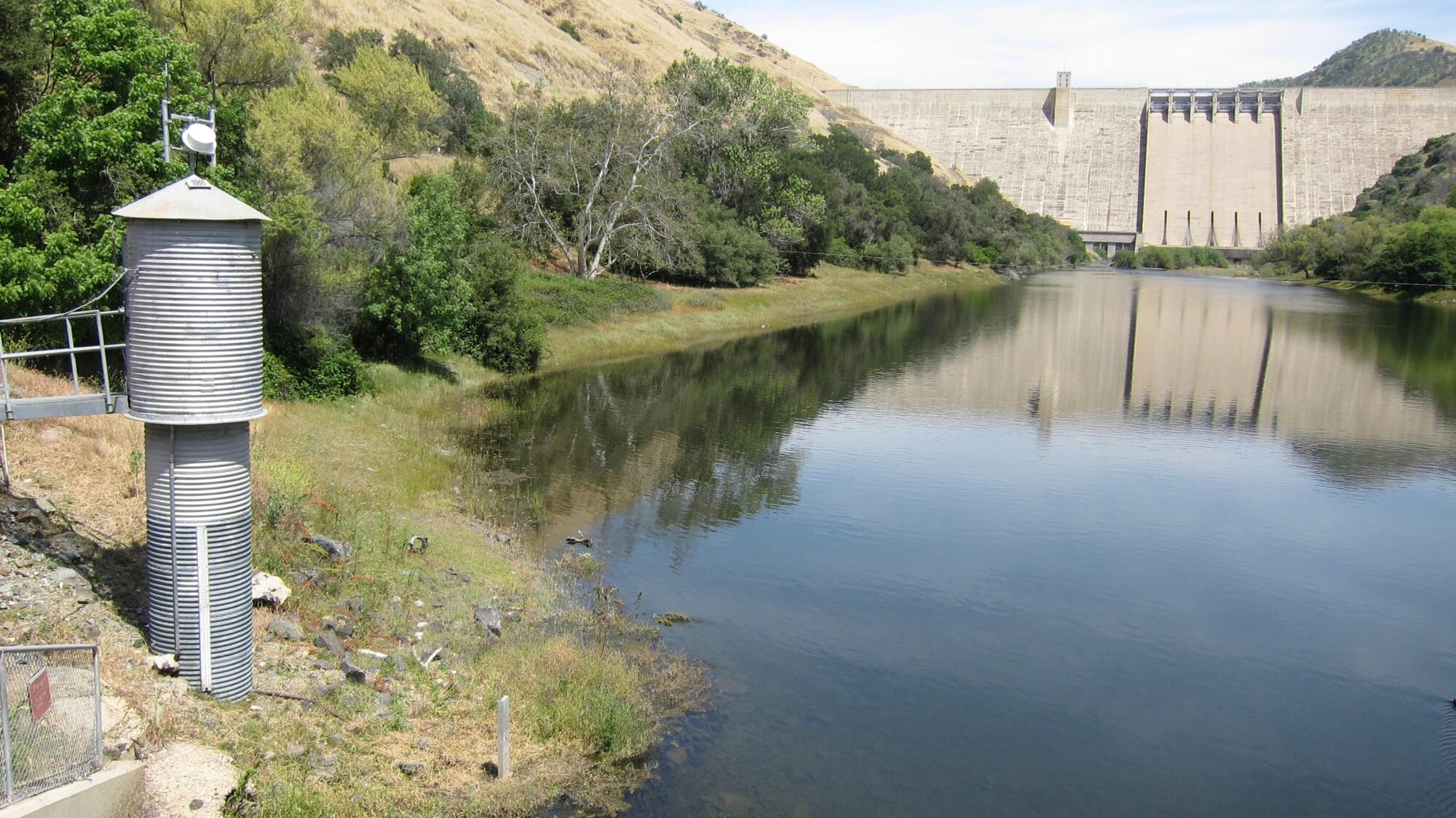
“The only way we know that there is enough water left in a river for environmental benefit is if we’re measuring it,” said Grantham, a river scientist and associate professor of cooperative extension. “And if we’re failing, if we don’t have an ability to know how much water is in there, it only takes a small amount of time for a river to go dry, to have extremely negative impacts on the species that we care about.”
California is recognized as a global hot spot of biodiversity, with freshwater species that are among the most threatened in the world. The list of fish species at risk of extinction includes winter-run Chinook salmon, steelhead, green sturgeon and delta smelt.
“More monitoring of these critical streams is needed to protect these vulnerable species,” Andrews said. “If we maintain the status quo, and if we don’t know how much water is in rivers and streams, we are essentially dooming some of our freshwater species.”
Hydrologist Melissa Rohde studies California ecosystems that depend on groundwater. In many areas, declining water levels put habitats at risk of drying up.
In another recent report, researchers with the Public Policy Institute of California assessed the dire threats to freshwater biodiversity in the state. Studies have found that about half of California’s native aquatic species are highly vulnerable to extinction this century, and the researchers said with climate change accelerating, the state needs to quickly adopt new types of conservation plans and approaches to save species.
“There are no protections in place for the vast majority of species that we could lose,” the researchers wrote. To reverse the decline in freshwater ecosystems, they said, business-as-usual management approaches likely won’t be successful and “bold, perhaps even risky innovations in policy and management are needed.”
While the institute’s proposals for “climate-smart” conservation plans outline strategies for reversing declines in species, the UC Berkeley researchers focus on the critical role of stream-flow monitoring data for making decisions about managing water and protecting ecosystems.
Among other findings, Grantham and Andrews determined that only about 9% of the state’s 817 large dams have an active gauge either upstream or downstream, and that about 29% of watersheds with the highest diversity of aquatic species are monitored.
They found that there are especially low numbers of stream gauges in watersheds that are minimally disturbed by people. In areas that are mostly untouched by nearby development or diversions, less than 1% of streams are covered by an active gauge.
This shows a particular need to expand flow measurements along these streams, Andrews said, which are where “we can start to see the fingerprint of climate change on the hydrology.”
Their analysis also found regional differences, with more gauges on streams that are heavily used for agriculture in the Central Valley, and significantly less monitoring in other areas, such as streams in parts of the Sierra Nevada, Southern California, the North Coast, the North Lahontan region and the Scott and Shasta rivers in the Klamath River basin.
These differences in regional data gathering are a significant problem, the authors said.
“If we’re missing certain regions, we can’t necessarily speak to the holistic impacts of climate change on California’s waterways and on water resources available for the economy, for cities, for farms,” Andrews said. “What’s happening on the North Coast is not going to be the same thing as what’s happening in Imperial Valley, is not going to be the same thing as what’s happening in Monterey. And so if we don’t have gauges in all of these places, we’re really flying blind.”
Efforts to restore river floodplains are expanding in California. Making space for water is increasingly seen as a natural solution for floods and droughts.
The researchers examined 814 active gauges and modeled scenarios in which more gauges are installed across the state. They said adding 500 gauges to the network could more than double the length of streams monitored.
They acknowledged that this expansion would be expensive because each gauge can cost as much as $40,000 to install and then requires additional funds to maintain. Expanding the network, they said, will require substantial investments by state, federal and local agencies, as well as water districts.
“With appropriate investment, it’s possible to design and build better networks,” Grantham said. “Having more information about how much water is in our rivers and streams will help us to better manage rivers and streams.”
Many state and federal officials are working to address the deficiencies but lack resources, Andrews said, adding that she hopes the study can help inform efforts by the Legislature to prioritize funds.
A previous analysis led by the Nature Conservancy found that 89% of “significant streams” in California are poorly monitored.
Other water experts agree that California should be collecting more data on rivers and streams, as well as groundwater.
“Without accurate information about the amount and quality of water in our rivers and streams, and in our groundwater basins, it is extremely difficult to develop effective policies to more successfully and sustainably manage our water,” said Peter Gleick, senior fellow and co-founder of the Pacific Institute.
“A major expansion of gauges would permit us to more accurately monitor and enforce water-rights allocations, determine ecological conditions and needs for threatened and endangered fisheries, and improve California’s resilience to both floods and droughts,” Gleick said. Recent advances in technology, he said, can also allow for the deployment of more real-time “smart” gauges that measure not only streamflow but also water quality, temperature and other measures of waterways’ health.
A new global analysis finds U.S. states along the Colorado River are under extremely high water stress. The region is grappling with how to reduce water use.
Scientists have found similar gaps in streamflow monitoring in regions around the world. Studies have also shown there has been a long-term decline in the number of operating stream gauges in the United States due to lack of funding.
Inadequate streamflow data has long been recognized as a problem in California, and in 2019 the state Legislature passed SB 19, a law that directed state agencies to develop a plan to address the gaps and install more gauges.
In 2022, state water agencies released their plan for prioritizing the installation of more gauges.
“A robust and reliable stream gauge network can help state, federal, and local agencies manage water resources more effectively for multiple benefits and help avoid conflicts,” said Teresa Connor, northern region manager for the state Department of Water Resources.
Connor said in an email that about 1,000 stream gauges are currently operating and reporting data in the state. Many of them are maintained by the U.S. Geological Survey, while the Department of Water Resources operates nearly 300 gauges.
Connor said since the plan was completed, the state agency has started upgrading or reactivating about 50 gauges, and is working with USGS to bring online an additional 11 gauges with available funding.
“The USGS works closely with many partner agencies in California to identify needs for high quality streamflow monitoring for about 500 streamflow stations,” said Paul Laustsen, a USGS spokesperson. “This collaboration means we work together to avoid duplication, ensure critical sites have been prioritized for monitoring and provide reliable, impartial, and foundational data to address water issues facing California.”
In addition to the federal funds that have been appropriated for stream monitoring, USGS has received a four-year state contract totaling nearly $1.2 million to help address gaps in California’s network of gauges.
Toward a more sustainable California
Get Boiling Point, our newsletter exploring climate change, energy and the environment, and become part of the conversation — and the solution.
You may occasionally receive promotional content from the Los Angeles Times.

